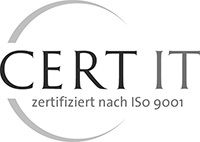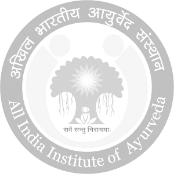The Ayurvedic pharmacopoeia has been dynamically developed and maintained over the centuries on the basis of the above principles. This evolution has been marked by the inclusion of new plant, animal and mineral substances and compounds in the pharmacopoeia and their occasional removal from the pharmacopoeia. Such changes were either global or region specific. However, an important aspect in the development of the Ayurvedic pharmacopoeia was the listing of substitutes, or more specifically, regional substitutes for the classical plants of Ayurveda. Often new plants found their way into the pharmacopoeia as substitutes rather than new entries.
The Ayurvedic Pharmacopoeia also showed some dynamism in terms of formulation development, as new formulations were developed and added to the pharmacopoeia from time to time. Different regional traditions of Ayurveda prescribed effective compositions based on clinical experience and innovations. In view of this, it is easy to understand and appreciate that greater scope exists in revising the Ayurvedic pharmacopoeia to meet the requirements of new geographical regions of the world, such as Europe, where Ayurveda is just beginning to make its presence felt. A closer look at the traditions of Ayurveda in India and their dynamics will enable us to develop a suitable strategy to envisage adaptation of Ayurveda pharmacopoeia according to the needs of European nations.
Inclusion and listing of new substances
At this juncture, it is important to discuss a few points on the subject of inclusion and listing of new substances in the pharmacopoeia. What are the principles involved in guiding and regulating inclusion processes for substances for therapeutic use? First of all, how can we understand the properties of substances when they have not been comprehensively mentioned in the classical Ayurvedic texts so far?
It is not very easy to understand the substance properties in the language of Ayurvedic pharmacology. For this purpose, there are two approaches in the Ayurvedic tradition: One is formed by the method of yogic intuition, and the other is empirical-rational observation. The former is inaccessible to ordinary mortals, but offers immediate results. On the other hand, the empirical-rational method is a laborious process and it may take decades, if not centuries, before the properties of a particular herb or substance can be fully comprehended in Ayurvedic terms. However, this process could be aided to some extent by means of modern scientific technology.
Empirical-Rational Method
Nowadays, we will probably have to adopt the empirical-rational method for the study and inclusion of new substances in the Ayurvedic pharmacopoeia, as it is compatible with our present way of thinking and the legal requirements in the society. This method involves numerous strategies such as observation of natural response of animals to the substances (in a kind of animal study), analysis of ethno-medical use of these substances in diverse tribes and peoples and more systematic study in terms of clinical observation of Ayurvedic parameters in pharmacological use. In this way, the nomenclature, identity, properties and uses of the new substances should be documented and evaluated before they are integrated into the Ayurvedic pharmacopoeia.
Once a preliminary understanding of the properties of a substance is obtained, it has to be compared with already known substances used in the Ayurvedic pharmacopoeia. If there is a clear similarity in terms of the properties of the new substance, there are two options below for how the new substance can be officially incorporated into the pharmacopoeia: One option would be to recognize the substance as a variant of the already known substance, e.g. Bala, Atibala, Nagabala, Bhumibala, etc. Another option would be to recognize the substance as a substitute for an already known substance. For example, the various plants like Convolvulus pluricaulis, Clitorea ternatea and Evolvulus alsinoides are known as Sankhapushpi. If there is greater morphological similarity, the substance is generally considered a variety. If there are more similarities in pharmacological properties, the substance is considered a substitute. However, these are not fixed rules and determinations.
If the new substance has been extensively studied and understood in terms of nomenclature, identity and properties, its different use must be formally elaborated. It must be assessed whether the substance is to be used as the main ingredient, as an excipient or in both ways in different formulations. Substances that counteract, are neutral to, or synergize with the new substance must be identified, and here the general rules in formulating a mixture must be clearly stated. Having also identified the most appropriate methods of extraction and processing, the new substance can now take its official place in the pharmacopoeia of Ayurveda.
What has been briefly described here is a small snapshot of the dynamics by which the evolution and regional adaptation of the Ayurvedic pharmacopoeia in different biogeographical zones is underpinned. A deeper study of Ayurvedic traditions from this perspective can help us envisage and develop guidelines for regional adaptation of Ayurvedic methods outside India, especially in European countries where Ayurveda is in a state of resurgence.











